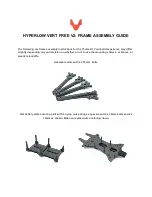
3
Installation
•
This sensor utilises the very latest in detection processing technology to
reduce the possibility of false alarms. However, correct mounting of the
detector is critical to ensure best detection or "catch" performance. You
can not just screw the sensor directly to a wall up high in a corner and
expect best performance. Please refer to the diagram & notes opposite.
Thoroughly walk test each sensor, and if detection is not acceptable in the
location you have chosen, adjust the angle of the sensor slightly & re-test.
You will find that a slight up/down angle change may improve catch
performance significantly.
•
Mount the detector on your wall using the swivel mount provided at a
minimum height of 1.2 metres and maximum of 2.1 metres (lower is
better). Make sure the detector is a minimum of 5 metres away from the
Receiver.
•
Always mount the
WPIR Motion Sensor
so that an intruder has to walk
across its zones, i.e. walk past the detector, not towards it.
•
DON’T mount detector facing glass doors or windows. Always mount
above windows and doors to look inside.
•
DON’T mount detector facing hot areas, e.g. open fireplaces, direct
sunlight or air conditioning vents.
•
Select a location where the detector can provide the best detecting range.
•
Always ensure that you do not cover an area with 2 detectors, so as to
avoid simultaneous transmission back to the receiver in your alarm control
panel.
•
If the unit is mounted close to metal frames or doors, this may reduce the
radio transmitting range.
Detection range (at 25
°
C)
10M
VERY IMPORTANT!
Always
mount the sensor
using the swivel bracket
provided, as this will allow
you to adjust the up/down
angle of the detector so
you can optimise the
catch performance of the
sensor.
Walk test each
sensor thoroughly, and
adjust as required.























